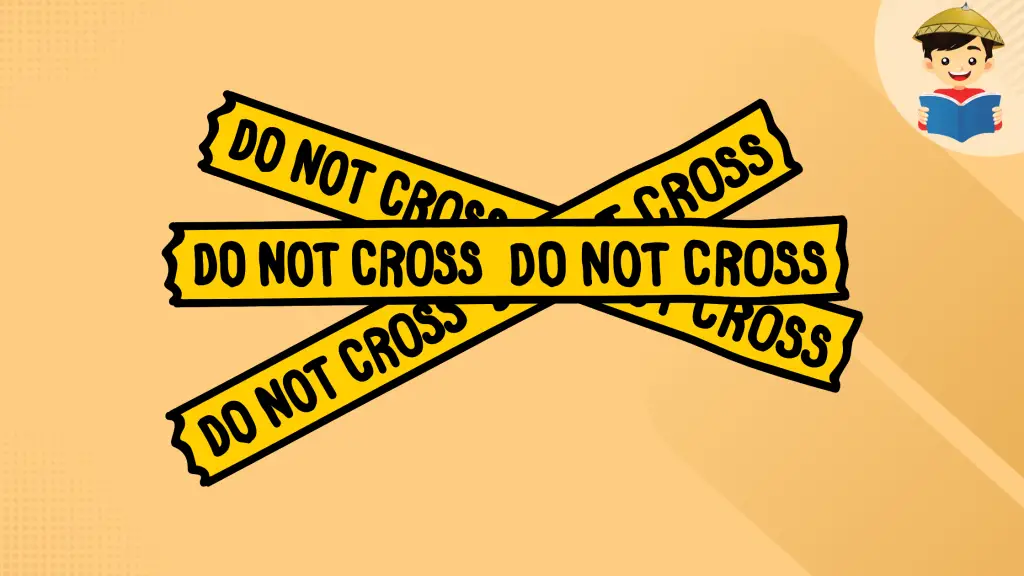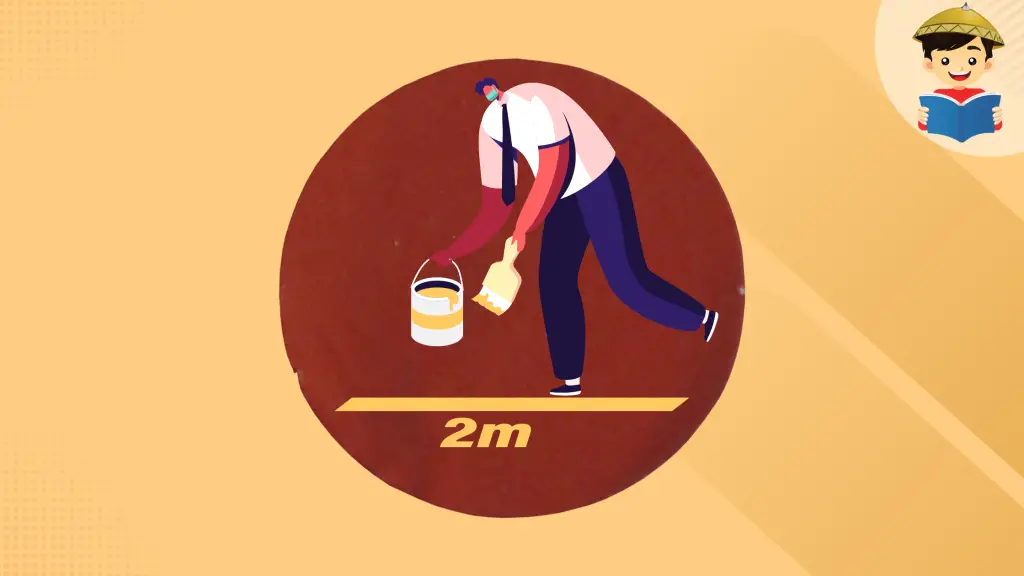How To Write Scope and Delimitation of a Research Paper (With Examples)

An effective research paper or thesis has a well-written Scope and Delimitation. This portion specifies your study’s coverage and boundaries.
Not yet sure about how to write your research’s Scope and Delimitation? Fret not, as we’ll guide you through the entire writing process through this article.
Related: How To Write Significance of the Study (With Examples)
Table of Contents
What Is the Scope and Delimitation of a Research Paper?

The “Scope and Delimitation” section states the concepts and variables your study covered. It tells readers which things you have included and excluded in your analysis.
This portion tells two things:1
- The study’s “Scope” – concepts and variables you have explored in your research and;
- The study’s “Delimitation” – the “boundaries” of your study’s scope. It sets apart the things included in your analysis from those excluded.
For example, your scope might be the effectiveness of plant leaves in lowering blood sugar levels. You can “delimit” your study only to the effect of gabi leaves on the blood glucose of Swiss mice.
Where Should I Put the Scope and Delimitation?
This portion is in Chapter 1, usually after the “Background of the Study.”
Why Should I Write the Scope and Delimitation of My Research Paper?
There’s a lot to discover in a research paper or thesis. However, your resources and time dedicated to it are scarce. Thus, given these constraints, you have to narrow down your study. You do this in the Scope and Delimitation.
Suppose you’re studying the correlation between the quantity of organic fertilizer and plant growth. Experimenting with several types of plants is impossible because of several limitations. So, you’ve decided to use one plant type only.
Informing your readers about this decision is a must. So, you have to state it in your Scope and Delimitation. It also acts as a “disclaimer” that your results are inapplicable to the entire plant kingdom.
What Is the Difference Between Delimitation and Limitation?

People often use the terms “Delimitation” and “Limitation” interchangeably. However, these words differ 2.
Delimitation refers to factors you set to limit your analysis. It delineates those that are included in your research and those that are excluded. Remember, delimitations are within your control.
Meanwhile, limitations are factors beyond your control that may affect your research’s results. You can think of limitations as the “weaknesses” of your study.
Let’s go back to our previous example. Due to some constraints, you’ve only decided to examine one plant type: dandelions. This is an example of a delimitation since it limits your analysis to dandelions only and not other plant types. Note that the number of plant types used is within your control.
Meanwhile, your study cannot state that a higher quantity of organic fertilizer is the sole reason for plant growth. That’s because your research’s focus is only on correlation. Since this is already beyond your control, then this is a limitation.
How To Write Scope and Delimitation: Step-by-Step Guide
To write your research’s Scope and Delimitation section, follow these steps:
1. Review Your Study’s Objectives and Problem Statement

Your study’s coverage relies on its objectives. Thus, you can only write this section if you know what you’re researching. Furthermore, ensure that you understand the problems you ought to answer.
Once you understand the abovementioned things, you may start writing your study’s Scope and Delimitation.
2. State the Key Information To Explain Your Study’s Coverage and Boundaries

a. The Main Objective of the Research
This refers to the concept that you’re focusing on in your research. Some examples are the following:
- level of awareness or satisfaction of a particular group of people
- correlation between two variables
- effectiveness of a new product
- comparison between two methods/approaches
- lived experiences of several individuals
It’s helpful to consult your study’s Objectives or Statement of the Problem section to determine your research’s primary goal.
b. Independent and Dependent Variables Included
Your study’s independent variable is the variable that you manipulate. Meanwhile, the dependent variable is the variable whose result depends upon the independent variable. Both of these variables must be clear and specific when indicated.
Suppose you study the relationship between social media usage and students’ language skills. These are the possible variables for the study:
- Independent Variable: Number of hours per day spent on using Facebook
- Dependent Variable: Grade 10 students’ scores in Quarterly Examination in English.
Note how specific the variables stated above are. For the independent variable, we narrow it down to Facebook only. Since there are many ways to assess “language skills,” we zero in on the students’ English exam scores as our dependent variable.
c. Subject of the Study
This refers to your study’s respondents or participants.
In our previous example, the research participants are Grade 10 students. However, there are a lot of Grade 10 students in the Philippines. Thus, we have to select from a specific school only—for instance, Grade 10 students from a national high school in Manila.
d. Timeframe and Location of the Study
Specify the month(s), quarter(s), or year(s) as the duration of your study. Also, indicate where you will gather the data required for your research.
e. Brief Description of the Study’s Research Design and Methodology
You may also include whether your research is quantitative or qualitative, the sampling method (cluster, stratified, purposive) applied, and how you conducted the experiment.
Using our previous example, the Grade 10 students can be selected using stratified sampling. Afterward, the researchers may obtain their English quarterly exam scores from their respective teachers. You can add these things to your study’s Scope and Delimitation.
3. Indicate Which Variables or Factors Are Not Covered by Your Research

Although you’ve already set your study’s coverage and boundaries in Step 2, you may also explicitly mention things you’ve excluded from your research.
Returning to our previous example, you can state that your assessment will not include the vocabulary and oral aspects of the English proficiency skill.
Examples of Scope and Delimitation of a Research Paper
1. Scope and Delimitation Examples for Quantitative Research

a. Example 1
Research Title
A Study on the Relationship of the Extent of Facebook Usage on the English Proficiency Level of Grade 10 Students of Matagumpay High School
Scope and Delimitation
(Main Objective)
This study assessed the correlation between the respondents’ duration of Facebook usage and their English proficiency level.
(Variables used)
The researchers used the number of hours per day of using Facebook and the activities usually performed on the platform to assess the respondents’ extent of Facebook usage. Meanwhile, the respondents’ English proficiency level is limited to their quarterly English exam scores.
(Subject of the study)
A sample of fifty (50) Grade 10 students of Matagumpay High School served as the study’s respondents.
(Timeframe and location)
This study was conducted during the Second Semester of the School Year 2018 – 2019 on the premises of Matagumpay High School in Metro Manila.
(Methodology)
The respondents are selected by performing stratified random sampling to ensure that there will be ten respondents from five Grade 10 classes of the school mentioned above. The researchers administered a 20-item questionnaire to assess the extent of Facebook usage of the selected respondents. Meanwhile, the data for the respondents’ quarterly exam scores were acquired from their English teachers. The collected data are handled with the utmost confidentiality. Spearman’s Rank Order Correlation was applied to quantitatively assess the correlation between the variables.
(Exclusions)
This study didn’t assess other aspects of the respondents’ English proficiency, such as English vocabulary and oral skills.
Note: The words inside the parentheses in the example above are guides only. They are not included in the actual text.
b. Example 2
Research Title
Level of Satisfaction of Grade 11 Students on the Implementation of the Online Learning Setup of Matagumpay High School for SY 2020 – 2021
Scope and Delimitation
This study aims to identify students’ satisfaction levels with implementing online learning setups during the height of the COVID-19 pandemic.
Students’ satisfaction was assessed according to teachers’ pedagogy, school policies, and learning materials used in the online learning setup. The respondents included sixty (60) Grade 11 students of Matagumpay High School who were randomly picked. The researchers conducted the study from October 2020 to February 2021.
Online platforms such as email and social media applications were used to reach the respondents. The researchers administered a 15-item online questionnaire to measure the respondents’ satisfaction levels. Each response was assessed using a Likert Scale to provide a descriptive interpretation of their answers. A weighted mean was applied to determine the respondents’ general satisfaction.
This study did not cover other factors related to the online learning setup, such as the learning platform used, the schedule of synchronous learning, and channels for information dissemination.
2. Scope and Delimitation Examples for Qualitative Research

a. Example 1
Research Title
Lived Experiences of Public Utility Vehicle (PUV) Drivers of Antipolo City Amidst the Continuous June 2022 Oil Price Hikes
Scope and Delimitation
This research focused on the presentation and discussion of the lived experiences of PUV drivers during the constant oil price hike in June 2022.
The respondents involved are five (5) jeepney drivers from Antipolo City who agreed to be interviewed. The researchers assessed their experiences in terms of the following: (1) daily net income; (2) duration and extent of working; (3) alternative employment opportunity considerations; and (4) mental and emotional status. The respondents were interviewed daily at their stations on June 6 – 10, 2022.
In-depth one-on-one interviews were used for data collection. Afterward, the respondents’ first-hand experiences were drafted and annotated with the researchers’ insights.
The researchers excluded some factors in determining the respondents’ experiences, such as physical and health conditions and current family relationship status.
b. Example 2
Research Title
A Study on the Perception of the Residents of Mayamot, Antipolo City on the Political and Socioeconomic Conditions During the Post-EDSA Period (1986 – 1996)
Scope and Delimitation
This research aims to discuss the perception of Filipinos regarding the political and socioeconomic economic conditions during the post-EDSA period, specifically during the years 1986 – 1996.
Ten (10) residents of Mayamot, Antipolo City, who belonged to Generation X (currently 40 – 62 years old), were purposively selected as the study’s respondents. The researchers asked them about their perception of the following aspects during the period mentioned above (1) performance of national and local government; (2) bureaucracy and government services; (3) personal economic and financial status; and (4) wage purchasing power.
The researchers conducted face-to-face interviews in the respondents’ residences during the second semester of AY 2018 – 2019. The responses were written and corroborated with the literature on the post-EDSA period.
The following factors were not included in the research analysis: political conflicts and turmoils, the status of the legislative and judicial departments, and other macroeconomic indicators.
Tips and Warnings
1. Use the “5Ws and 1H” as your guide in understanding your study’s coverage
- Why did you write your study?
- What variables are included?
- Who are your study’s subject
- Where did you conduct the study?
- When did your study start and end?
- How did you conduct the study?
2. Use key phrases when writing your research’s scope
- This study aims to …
- This study primarily focuses on …
- This study deals with …
- This study will cover …
- This study will be confined…
3. Use key phrases when writing factors beyond your research’s delimitations
- The researcher(s) decided to exclude …
- This study did not cover….
- This study excluded …
- These variables/factors were excluded from the study…
4. Don’t forget to ask for help
Your research adviser can assist you in selecting specific concepts and variables suitable to your study. Make sure to consult him/her regularly.
5. Make it brief
No need to make this section wordy. You’re good to go if you meet the “5Ws and 1Hs”.
Frequently Asked Questions
1. What are Scope and Delimitation in Tagalog?
In a Filipino research (pananaliksik), Scope and Delimitation is called “Saklaw at Delimitasyon”.
Here’s an example of Scope and Delimitation in Filipino:
Pamagat ng Pananaliksik
Epekto Ng Paggamit Ng Mga Digital Learning Tools Sa Pag-Aaral Ng Mga Mag-Aaral Ng Mataas Na Paaralan Ng Matagumpay Sa General Mathematics
Sakop at Delimitasyon ng Pag-aaral
Nakatuon ang pananaliksik na ito sa epekto ng paggamit ng mga digital learning aids sa pag-aaral ng mga mag-aaral.
Ang mga digital learning tools na kinonsidera sa pag-aaral na ito ay Google Classroom, Edmodo, Kahoot, at mga piling bidyo mula YouTube. Samantala, ang epekto sa pag-aaral ng mga mag-aaral ng mga nabanggit na digital learning tools ay natukoy sa pamamagitan ng kanilang (1) mga pananaw hinggil sa benepisyo nito sa kanilang pag-aaral sa General Mathematics at (2) kanilang average grade sa asignaturang ito.
Dalawampu’t-limang (25) mag-aaral mula sa Senior High School ng Mataas na Paaralan ng Matagumpay ang pinili para sa pananaliksik na ito. Sila ay na-interbyu at binigyan ng questionnaire noong Enero 2022 sa nasabing paaralan. Sinuri ang resulta ng pananaliksik sa pamamagitan ng mga instrumentong estadistikal na weighted mean at Analysis of Variance (ANOVA).
Hindi saklaw ng pananaliksik na ito ang ibang mga aspeto hinggil sa epekto ng online learning aids sa pag-aaral gaya ng lebel ng pag-unawa sa aralin at kakayahang iugnay ito sa araw-araw na buhay.
2. The Scope and Delimitation should consist of how many paragraphs?
Three or more paragraphs will suffice for your study’s Scope and Delimitation. Here’s our suggestion on what you should write for each paragraph:
Paragraph 1: Introduction (state research objective)
Paragraph 2: Coverage and boundaries of the research (you may divide this section into 2-3 paragraphs)
Paragraph 3: Factors excluded from the study
References
- University of St. La Salle. Unit 3: Lesson 3 Setting the Scope and Limitation of a Qualitative Research [Ebook] (p. 12). Retrieved from https://www.studocu.com/ph/document/university-of-st-la-salle/senior-high-school/final-sg-pr1-11-12-unit-3-lesson-3-setting-the-scope-and-limitation-of-a-qualitative-research/24341582
- Theofanidis, D., & Fountouki, A. (2018). Limitations and Delimitations in the Research Process. Perioperative Nursing (GORNA), 7(3), 155–162. doi: 10.5281/zenodo.2552022
Written by Jewel Kyle Fabula
Jewel Kyle Fabula
Jewel Kyle Fabula graduated Cum Laude with a degree of Bachelor of Science in Economics from the University of the Philippines Diliman. He is also a nominee for the 2023 Gerardo Sicat Award for Best Undergraduate Thesis in Economics. He is currently a freelance content writer with writing experience related to technology, artificial intelligence, ergonomic products, and education. Kyle loves cats, mathematics, playing video games, and listening to music.
Copyright Notice
All materials contained on this site are protected by the Republic of the Philippines copyright law and may not be reproduced, distributed, transmitted, displayed, published, or broadcast without the prior written permission of filipiknow.net or in the case of third party materials, the owner of that content. You may not alter or remove any trademark, copyright, or other notice from copies of the content. Be warned that we have already reported and helped terminate several websites and YouTube channels for blatantly stealing our content. If you wish to use filipiknow.net content for commercial purposes, such as for content syndication, etc., please contact us at legal(at)filipiknow(dot)net